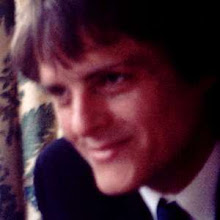These rules are intended for novice, amateur and generally friendly play.
1. First serve is decided by a spin of the racket, all of which are dissimilarly marked (often with 'your serve' and 'my serve' printed on opposite sides).
2. Points are scored only by the server, whenever the non-server doesn't make a good return; if the server doesn't make a good return, non-server wins the right to serve. Games are scored first-to-nine points, unless eight-all is reached, in which case the then non-serving player may announce "set ten" to force a ten point game. British games never go beyond ten points, except in doubles play (forget it).
3. The server decides which side of the court to serve from first; this is the 'even' side for that game. (Whenever the sum of the scores is even, a player must serve from that side, and vice versa).
4. The out-of-court line is highest, and stretches right around the court, sometimes horizonally, sometimes diagonally. The highest horizontal marks the front of the court. If a ball hits a wall anywhere above this line, or hits the ceiling, it's out.
5. Every shot must hit the front wall before it bounces on the floor. A serve must hit it directly, and always above the front 6ft 'cut line'. A return may strike it indirectly, and need only hit above the front 19in 'tin' line, so called because a metal plate is often fixed below it; this makes an obvious noise when a ball strikes it.
6. To begin a rally, the server throws the ball into the air. A thrown ball must not bounce before it is hit by the server, so a ball thrown by the server but not hit concedes the serve. So does not having at least one foot inside the marked square on that side of the court.
7. A served ball must also, if it is not volleyed (ie hit before it bounces) by the non-server, bounce behind the 'short-line' that forms the front of each service square, and also in the non-server's half of the court.
8. A ball cannot be returned if has bounced twice on the floor after striking the front wall.
9. A ball was not properly returned if it was struck twice, or if it bounced on the floor before hitting the front wall (directly or otherwise).
10. Players must actively allow their opponents to reach the ball and so play a legal shot. A point is granted (or serve awarded) is a player fails to do this. A let (replay) occurs when a player makes a good return but cannot also 'vacate' the court. (Hence, lets are relatively frequent in amateur play).
skip to main |
skip to sidebar
Despite the adult content warning, as much as you're likely to get will be abusive language and crude jokes. -MC

